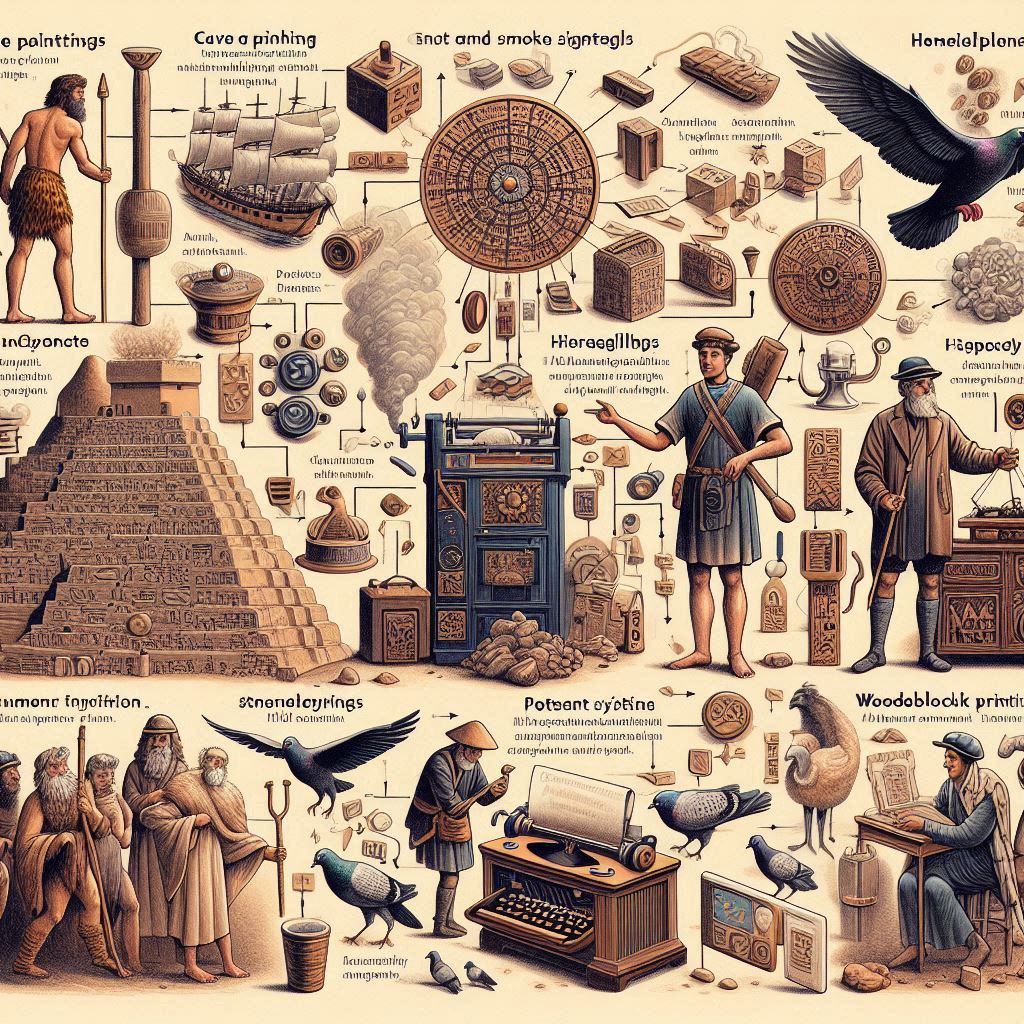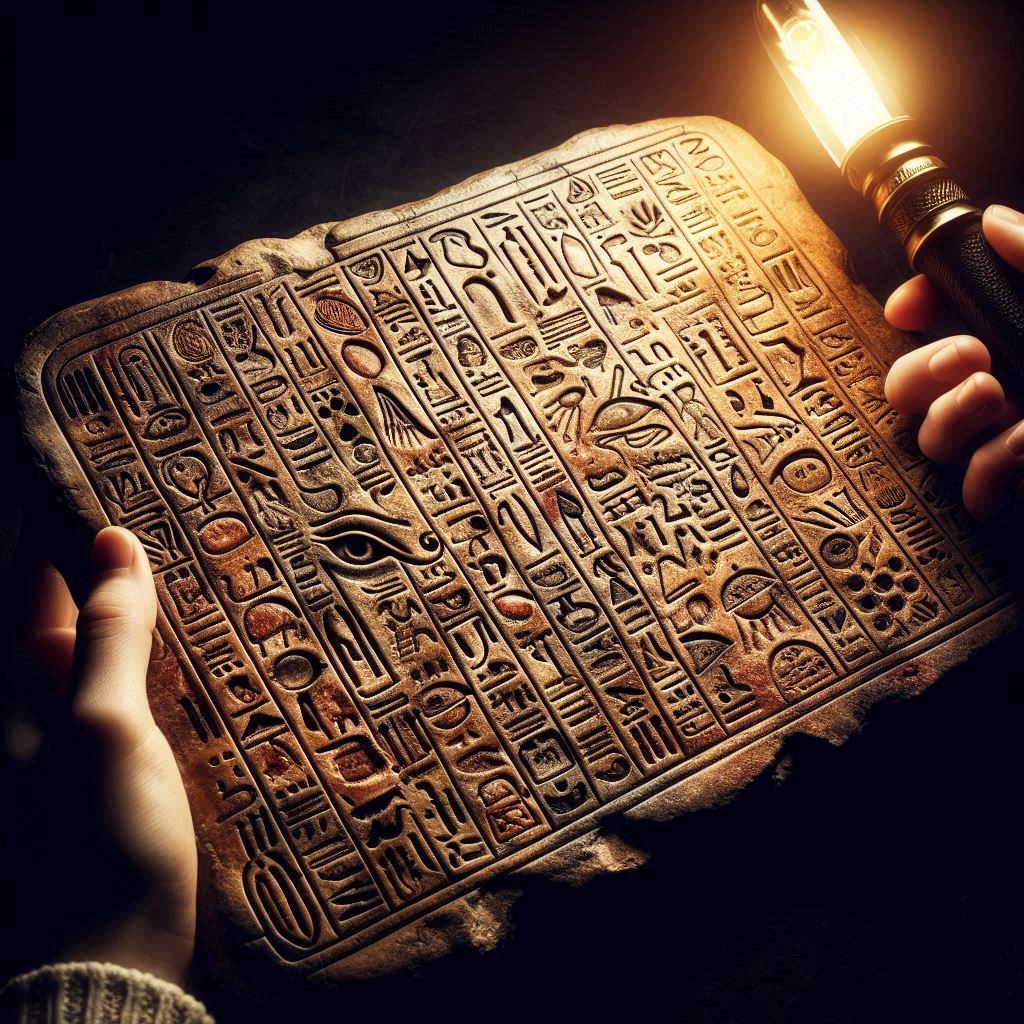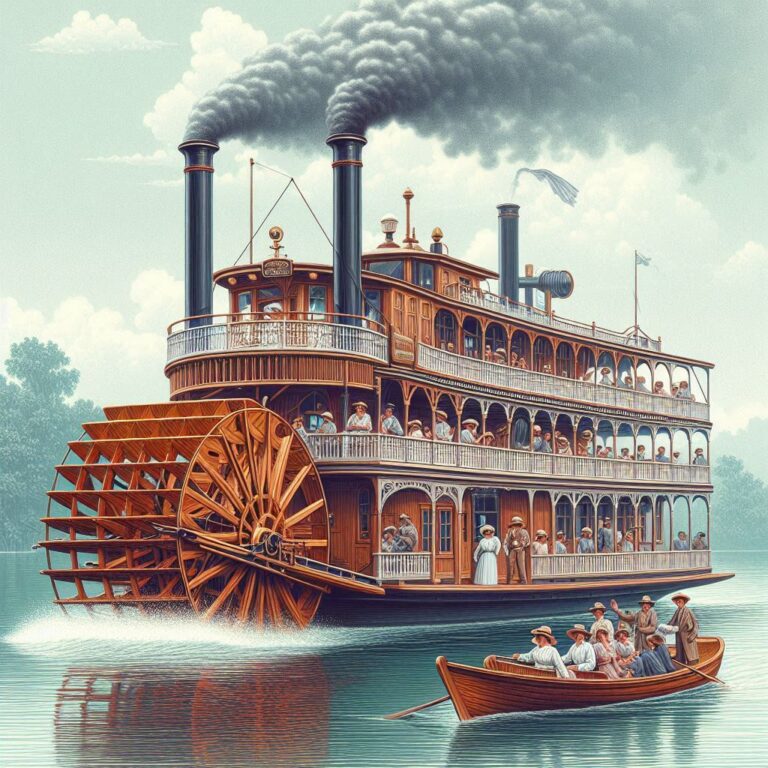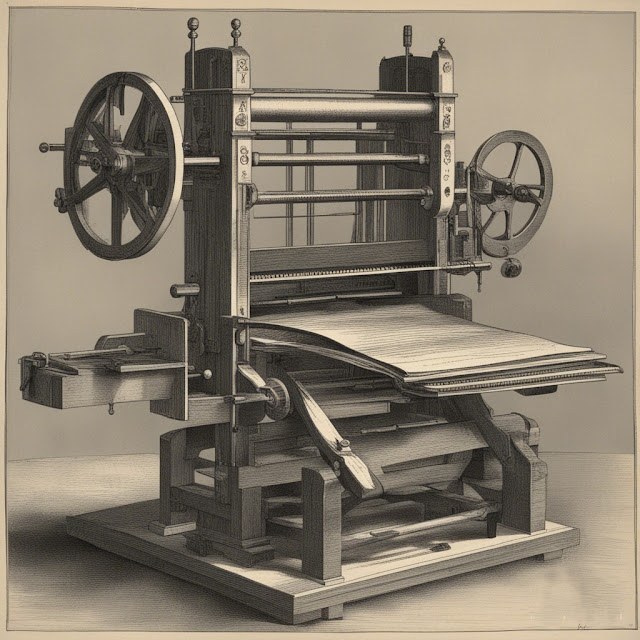Introduction: The History of Communication
Communication has always been at the heart of human progress, enabling individuals, communities, and civilizations to share ideas, solve problems, and foster relationships. From the most primitive gestures to the complex global networks of today, communication has shaped the way societies function and interact. In ancient times, the ability to convey information quickly and efficiently across vast distances was not only a matter of convenience but a key factor in survival, governance, and the expansion of empires. While today’s digital world might seem worlds apart from the ancient forms of communication, many of our modern systems are built upon the foundations established thousands of years ago.

Explore the history of communication, from its earliest forms to the invention of postal systems and the evolution of communications. By examining these innovations, we gain insight into the evolution of communication and its lasting impact on our modern systems. Let’s delve into how ancient communication systems not only conveyed information but also profoundly shaped civilizations.
The Background of Communication
Communication as a Necessity in Early Societies
As early humans transitioned from small, nomadic groups to settled communities, the need for effective communication became paramount. In prehistoric times, survival often depended on the ability to convey crucial information, such as the location of food or the presence of danger. Initially, communication likely involved basic forms like vocalizations and hand signals, but as societies grew more complex, so too did their need for more sophisticated methods of sharing information. These earliest forms of communication laid the groundwork for the more organized systems that would follow, helping to shape the course of human history.
The Role of Early Language and Symbols
Spoken language marked a major leap forward in the evolution of communication. With language, humans could share knowledge, experiences, and ideas in a way that was previously impossible. The development of symbolic representations, such as cave paintings and early writing systems, added another layer of complexity. These symbols allowed for the recording of information that could be passed down through generations, preserving knowledge and culture in ways that oral traditions could not. This was particularly important for early civilizations, which relied on written records to administer their growing empires and conduct trade.
Invention of Communication Systems
The Rise of Organized Communication
The invention of communication systems was a direct response to the needs of increasingly complex societies. As trade networks expanded and empires grew, rulers needed reliable ways to send messages across vast distances. The earliest communication systems were often rudimentary, relying on natural elements like fire and sound to transmit information. Over time, these systems became more organized and efficient, with different civilizations developing their own unique methods for long-distance communication.
Smoke Signals as One of the Earliest Forms of Communication
Smoke signals were among the earliest communication systems to emerge. These signals, which involved creating controlled puffs of smoke to convey different messages, were used by a variety of cultures around the world. The basic mechanics were simple: a fire would be lit, and a blanket or other material would be used to cover and uncover the fire at regular intervals, producing distinct puffs of smoke. Each signal had a specific meaning, allowing messages to be sent over long distances without the need for verbal communication.

Cultural Significance of Smoke Signals
Smoke signals were used in many parts of the world, including among Native American tribes and the Inca Empire. In North America, for example, the Apache used smoke signals to communicate across the desert, while the Inca used them to send messages over the rugged terrain of the Andes. These signals were often used in times of war to send warnings or coordinate movements. In other cases, they were used to relay information about trade or the movement of goods.
Effectiveness and Limitations of Smoke Signals
While smoke signals were an effective way to communicate over long distances, they had certain limitations. The visibility of the signals was dependent on the weather, and messages could only be sent in clear conditions. In addition, the system required a direct line of sight between the sender and the receiver, meaning that signals could not be sent through dense forests or over mountainous terrain. Smoking signals were a valuable tool for many early civilizations despite these limitations.
Drum Languages: An Auditory Communication System
Introduction to Drum Languages
Another early form of long-distance communication was the use of drum languages. Drum languages were based on the transmission of messages through rhythmic patterns that mimicked the intonation and structure of spoken language. These languages were particularly useful in regions with dense forests, where visual communication methods like smoke signals were less effective.
Case Studies: Drum Languages in West Africa and the Amazon
The Yoruba people of West Africa developed a sophisticated drum language that could relay detailed messages over long distances. The drumbeats were arranged in patterns that corresponded to the tonal languages spoken by the Yoruba, allowing for the transmission of complex information. In the Amazon rainforest, indigenous tribes also used drum languages to send messages across the vast and dense jungle. These drums were often used to communicate important events, such as the arrival of visitors or the need for a community gathering.

Social and Cultural Context of Drum Languages
Drum languages were not just practical tools for communication; they also played a significant role in the social and cultural life of the communities that used them. In many cases, the rhythms of the drums were used in ceremonies and rituals, adding a layer of spiritual significance to their use. Drum languages were also used to preserve oral traditions, with stories and histories being passed down through generations in the form of drum-based communication.
History of Communication Timeline: Ancient Postal Systems
Here’s a detailed timeline table that captures key milestones in the history of communication.
History of communication timeline.
| Time Period | Communication Innovation | Details |
|---|---|---|
| Prehistoric Era (c. 100,000 BCE) | Cave Paintings | Early humans used cave paintings to depict stories, hunting strategies, and daily life. Found in places like Lascaux, France. |
| 30,000 BCE | Smoke Signals | Used by ancient cultures like Native Americans and the Chinese to send signals over long distances, especially for warnings or to indicate troop movements. |
| 4,000 BCE | Cuneiform Writing | The Sumerians in Mesopotamia developed one of the earliest known writing systems, using wedge-shaped marks on clay tablets. |
| 3,000 BCE | Hieroglyphics | The Egyptians developed hieroglyphics as a complex system of pictorial writing for religious texts, governance, and recording history. |
| 776 BCE | Greek Homing Pigeons | The Greeks used homing pigeons to carry messages during the Olympic Games. This is one of the earliest examples of using animals for communication. |
| 490 BCE | Marathon Runner (Pheidippides) | According to legend, the Greek soldier Pheidippides ran from Marathon to Athens to deliver news of a military victory, demonstrating early human-based long-distance communication. |
| 55 BCE | Roman Postal System | The Romans created an extensive postal system using relay stations and messengers across the empire to deliver military and government orders. |
| 868 CE | Printing with Woodblocks | The Chinese invented woodblock printing, enabling the mass production of texts and the wider dissemination of knowledge. |
| 1440 CE | Gutenberg Printing Press | Johannes Gutenberg’s invention of the printing press revolutionized the spread of knowledge in Europe, making books and written material more accessible to the masses. |
| 1605 CE | First Newspaper | Johann Carolus published "Relation," widely considered the first newspaper, in Strasbourg. This helped lay the foundation for modern journalism. |
| 1837 CE | Telegraph | Samuel Morse developed the electric telegraph, allowing long-distance transmission of messages using Morse code, a system of dots and dashes. |
| 1876 CE | Telephone | Alexander Graham Bell invented the telephone, revolutionizing real-time voice communication over long distances. |
| 1896 CE | Wireless Radio | Guglielmo Marconi developed the first successful long-distance wireless telegraph, leading to the invention of the radio. |
| 1927 CE | Television Broadcasts | Philo Farnsworth and other inventors created the first successful television transmission, changing the way information and entertainment were delivered to the masses. |
| 1969 CE | ARPANET (Precursor to the Internet) | The U.S. Department of Defense launched ARPANET, the first network that would evolve into the modern-day internet, connecting computers for the exchange of data. |
| 1971 CE | First Email | Ray Tomlinson sent the first electronic mail (email) over ARPANET, revolutionizing personal and business communication. |
| 1991 CE | World Wide Web (WWW) | Tim Berners-Lee introduced the World Wide Web, which would become the backbone of the modern internet, changing global communication forever. |
| 2004 CE | Social Media Boom | Platforms like Facebook, Twitter, and YouTube were launched, drastically changing the way people communicate, share information, and form communities globally. |
| 2020s and Beyond | Quantum Communication | The development of quantum internet technologies promises highly secure, instant communication across vast distances, potentially revolutionizing how data is transmitted. |
Overview of Postal Systems
The development of postal systems marked a major milestone in the history of communication. These systems allowed for the reliable transmission of messages across vast distances, helping to connect far-flung regions of large empires. One of the earliest known postal systems was established by the Persian Empire, which created a network of relay stations and messengers to ensure that messages could be sent quickly and efficiently across the empire.
Structure and Operation of Postal Systems
These early postal systems were highly organized, with messengers traveling between relay stations that were strategically placed along major trade routes. In the Persian Empire, messengers would travel on horseback, stopping at relay stations to exchange horses and rest before continuing their journey. The Roman Empire also developed an extensive postal network, known as the Cursus Publicus, which played a crucial role in maintaining communication between the central government and the distant provinces.
Influence of Postal Systems on Trade and Governance
The establishment of postal systems had a profound impact on trade and governance. By enabling the rapid transmission of messages, these systems allowed rulers to issue orders, enforce laws, and maintain control over vast territories. In addition, postal systems facilitated trade by providing merchants with up-to-date information on market conditions, trade routes, and the availability of goods. This made it easier for merchants to plan their journeys and conduct business across long distances.
Visual Communication Methods
Hieroglyphics and Pictographs: The Dawn of Written Language
One of the earliest and most influential forms of visual communication in human history was the development of hieroglyphics and pictographs. These systems of writing were used primarily by ancient civilizations such as the Egyptians and Mesopotamians, and they represented ideas, objects, and sounds through symbols and images. Hieroglyphics, used extensively in ancient Egypt, served both religious and administrative functions, conveying complex ideas and recording the accomplishments of pharaohs. Pictographs were simpler, consisting of rudimentary drawings to represent things or actions, such as crops, animals, or daily tasks. Both these systems of writing were carved on monuments, tombs, and temple walls, preserving important information for future generations.
While these early writing systems may seem primitive compared to modern alphabets, they laid the groundwork for all future written communication. By providing a way to record information in a permanent, visual format, hieroglyphics and pictographs enabled early civilizations to establish legal codes, manage economic resources, and organize their societies more effectively.

Symbolic Languages and the Evolution of Complex Writing Systems
As communication systems evolved, symbolic languages became more advanced. In Mesopotamia, for example, the development of cuneiform — one of the earliest known forms of writing — was a significant milestone. Cuneiform was used to record transactions, legal documents, and literature, with symbols becoming more abstract and systematized over time. By the time of the Akkadian Empire, cuneiform had evolved into a fully-fledged writing system, capable of representing entire phrases and sentences.
This transition from simple pictographs to more abstract symbols reflected the increasing complexity of early societies. It also made communication more efficient, as fewer symbols were needed to convey more complex ideas. Over time, many ancient cultures developed their own writing systems, including the Chinese, who created logographic characters that remain in use today. These systems not only served practical purposes but also reinforced the social hierarchies and religious ideologies of the time.
Artistic Representations as Communication Tools
In addition to writing, many ancient cultures used art as the earliest form of communication. Cave paintings, sculptures, and other artistic representations were not only used for religious and cultural purposes but also to tell stories, record historical events, and convey messages. The famous Lascaux Cave paintings in France, for instance, depict hunting scenes and animals, giving modern scholars insight into the daily lives of prehistoric people. In ancient Egypt, tomb paintings served to glorify the deceased and ensure their safe passage into the afterlife, while in Mesoamerica, the Maya used elaborate murals to depict scenes of mythology and court life.
These artistic representations were a powerful means of communication, capable of conveying ideas that transcended language barriers. They allowed civilizations to express their beliefs, achievements, and histories in ways that were both accessible and enduring.
Comparative Analysis of Communication Methods
Similarities and Differences Between Earliest Form of Communication Methods
Earliest forms of communication, whether through smoke signals, drum languages, or written symbols, shared some common characteristics. All of these methods were developed out of necessity, as societies needed efficient ways to convey information over distances and preserve important knowledge. However, they differed greatly in terms of reach, effectiveness, and cultural significance.
For example, smoke signals were highly localized and limited by environmental conditions, while drum languages could transmit messages through dense forests, making them more reliable in certain settings. Written communication, on the other hand, offered a permanent record that could be referred to for generations, but it was limited to literate individuals and required the development of complex writing systems.
These methods also reflected the specific needs and environments of the civilizations that used them. For instance, the Inca’s use of quipus, a system of knotted strings, allowed them to communicate complex mathematical and administrative information without a written language. Meanwhile, the use of hieroglyphics in Egypt served to both glorify rulers and communicate with the divine, showing how communication systems could be deeply intertwined with religion and politics.
Adaptations and Innovations in Communication
As civilizations grew and became more complex, so too did their communication methods. One of the key innovations in early communication was the development of relay systems, such as the Persian and Roman postal services, which allowed messages to be sent across vast distances. Another major innovation was the transition from oral to written communication, which not only allowed for the transmission of more detailed information but also preserved it for future generations.
In many cases, civilizations adapted communication methods from neighboring cultures. For example, the Romans borrowed the Greek alphabet and adapted it to fit the Latin language, while the Egyptians incorporated elements of Mesopotamian writing systems into their own hieroglyphics. These adaptations not only made communication more efficient but also helped to spread ideas and technologies across cultural boundaries.
The Lasting Impact of Ancient Communication Systems
Influence of Ancient Communication on Modern Systems
The influence of ancient communication systems can still be felt in many aspects of modern life. Writing systems, for example, have evolved over thousands of years but remain based on the principles established by early civilizations. The Roman alphabet, which was adapted from Greek and Phoenician alphabets, is the basis for most modern Western languages, while Chinese characters, which evolved from ancient logograms, are still used by over a billion people today.
Ancient methods of long-distance communication, such as postal systems, have also influenced modern communication networks. The concept of relay stations and messengers used in the Persian Empire is echoed in today’s global mail and delivery services, while the idea of sending information across vast distances using symbols or sounds has been transformed by technologies like the internet and satellites.
Lessons from Ancient Communication for Today’s Society
The history of communication systems provides valuable lessons for the modern world. One key lesson is the importance of adapting communication methods to the specific needs of a society. Just as ancient civilizations developed different methods of communication based on their environments and resources, today’s societies must find ways to harness new technologies, like quantum computing and artificial intelligence, to meet the growing demand for faster, more reliable communication.
Another lesson is the enduring value of communication in building and maintaining societies. Ancient communication systems were not just tools for transmitting information; they were essential to the functioning of governments, economies, and social structures. In the same way, today’s communication networks are vital to the global economy and play a key role in shaping international relations and cultural exchange.
FAQ
What is the origin of human communication?
Human communication dates back to prehistoric times, long before the invention of language. Early humans relied on gestures, facial expressions, and sounds to convey meaning. Cave paintings (such as those found in Lascaux, France) served as one of the first symbolic forms of communication, representing hunting scenes, rituals, and daily life. These early methods show how humans attempted to share experiences and knowledge long before structured language existed.
How did written communication begin?
Written communication emerged around 3200 BCE with cuneiform in Mesopotamia and hieroglyphics in Egypt. These writing systems were initially pictorial and used to record trade, taxes, and religious rituals. Over time, alphabets such as the Phoenician script simplified communication and influenced Greek and Latin alphabets, which became the foundation for many modern languages. Writing allowed ideas to outlive individuals, making it one of humanity’s most important inventions.
What role did the printing press play in communication history?
Johannes Gutenberg’s printing press, invented around 1440, was a turning point in communication history. Before this, books were copied by hand, making them rare and expensive. The press allowed mass production of books, newspapers, and pamphlets, fueling the Renaissance, spreading scientific discoveries, and challenging authority through the Reformation. It democratized knowledge, increasing literacy rates and enabling the rapid circulation of ideas across Europe and beyond.
When did electronic communication first appear?
Electronic communication began in the early 19th century with the telegraph. Samuel Morse’s invention in the 1830s made it possible to send coded messages over long distances using electricity. This was followed by the telephone in 1876, which enabled real-time voice conversations. These innovations marked the first steps toward the interconnected world we know today.
How did the telephone transform communication?
The telephone fundamentally changed personal and business communication. For the first time, people could speak to one another across great distances without needing to travel. This invention accelerated global commerce, connected families separated by migration, and made communication more personal compared to the telegraph’s coded messages. Over time, telephone networks expanded worldwide, eventually leading to mobile phones.
What was the impact of the radio and television?
Radio and television ushered in the era of mass communication. Radio broadcasts during the early 20th century made it possible for news, entertainment, and wartime messages to reach millions simultaneously. Television added a visual dimension, shaping culture and politics by influencing public opinion and creating shared experiences. Events like the moon landing and presidential debates were watched live, showing the power of visual mass communication.
How has the internet changed communication?
The internet has revolutionized communication more than any previous invention. It merged written, visual, and audio formats into a single global network. Emails replaced letters, social media connected billions instantly, and video calls shrank the world into virtual meeting rooms. The internet also gave rise to user-generated content, blogs, and online communities, shifting communication from one-way broadcasting to interactive dialogue.
What might the future of communication look like?
The future of communication is likely to involve technologies that feel almost science fiction today. Brain-computer interfaces may allow people to share thoughts directly. Holographic calls could replace video calls, making virtual presence more realistic. AI-driven translation may remove language barriers altogether, while augmented and virtual reality could create immersive communication spaces. The core trend is toward faster, more natural, and borderless human interaction.
Conclusion
The evolution of communication from ancient to modern times illustrates the ingenuity and adaptability of human societies. Whether through smoke signals, drum languages, hieroglyphics, or postal systems, ancient civilizations found innovative ways to overcome the limitations of their environments and communicate across vast distances. These early systems laid the foundation for the complex, interconnected world we live in today, where information can be shared instantly across the globe.
By studying these ancient communication systems, we gain a deeper understanding of how societies functioned and developed. More importantly, we learn valuable lessons about the importance of the invention of communication in creating cohesive, prosperous societies. As we look to the future, the challenges and opportunities presented by new technologies will require us to continue innovating and adapting our communication methods, just as our ancestors did thousands of years ago.
In conclusion, appreciating communication’s evolution helps us understand the past and prepare us for the future. From the development of language to the advent of digital communication, the ability to share information is one of humanity’s greatest strengths. As we continue to advance, we should remember the lessons of the past and strive to create communication systems that connect and empower us all.
Thank you for exploring the fascinating evolution of communication with me! If you enjoyed this blog and are eager to dive into more innovative topics, be sure to check out my other blogs.






